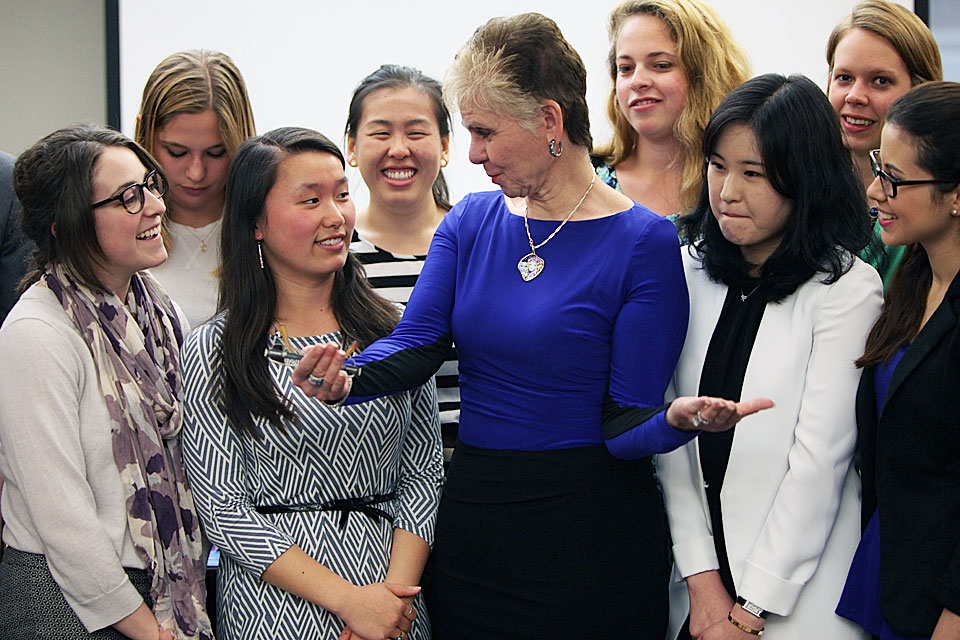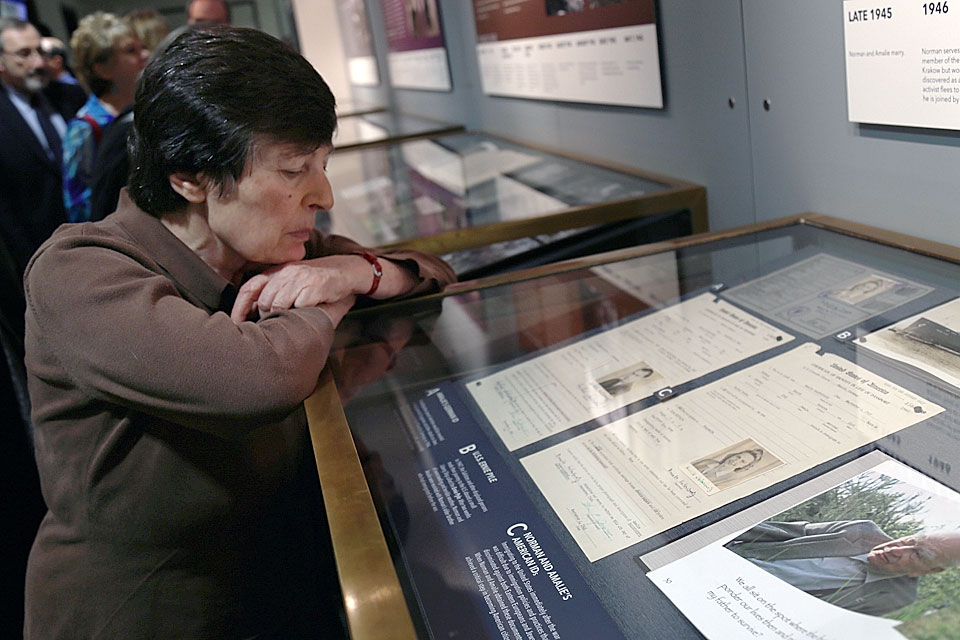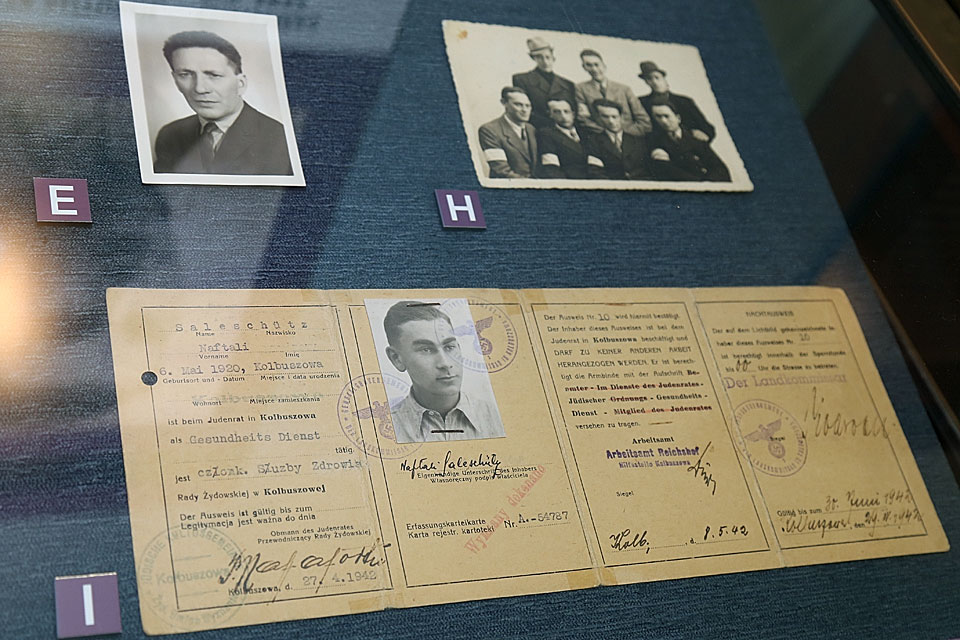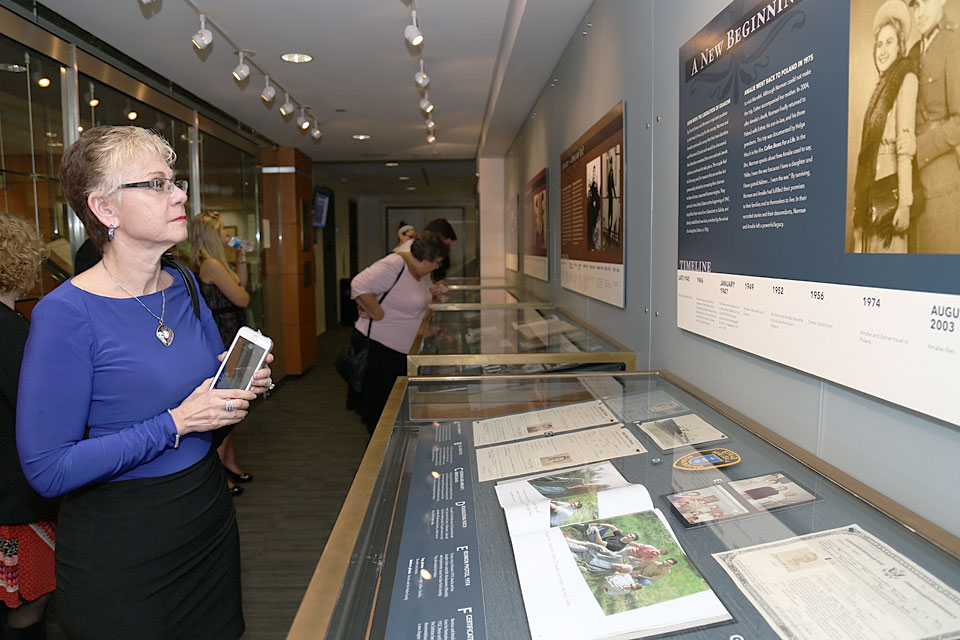On four glass-enclosed tables on the seventh floor of the George Washington University Estelle and Melvin Gelman Library sit an assortment of items— photographs, a Jewish prayer book and candlesticks.
Separately, the items are seemingly mundane, but together they tell the story of the unlikely survival of Norman and Amalie Patranker Salsitz, Jews who braved labor camps, launched daring escapes, assumed false identities and married before leaving Poland after the fall of the Nazi regime during World War II.
The exhibit—“Remembering the Holocaust: A Story of Love, Loss and Survival”—is based on the Salsitzes’ dual memoir, “Against all Odds: A Tale of Two Survivors.” It opened Tuesday evening.
The opening was scheduled in tandem with YomHashoah, Holocaust Remembrance Day, which falls on April 15 this year. The day honors the anniversary of the Warsaw Ghetto Uprising and is commemorated on the 27th day of Nisan on the Hebrew calendar.
“The remarkable thing about this exhibit is that Mr. Salsitz saved an immense amount of material—hundreds of photographs and documents,” said Walter Reich, Yitzhak Rabin Memorial professor of international affairs, ethics and human behavior and professor of psychiatry and behavioral sciences.
“He preserved his papers, documents and photographs because he was a collector— it was what he did,” Dr. Reich said. “He had the most accurate and rich memory of anyone I'd ever met.”
GW undergraduate students created the exhibit for Dr. Reich’s “Holocaust Memory” course with support from a Shenkman Career Services Fund Faculty and Staff Innovation Grant. The United States Holocaust Memorial Museum and the Salsitzes’ daughter Esther Dezube loaned the photographs and objects used.
“My father always said never forget,” Ms. Dezube said. “I’m from the bridge generation, my father has passed on as have a lot of other Holocaust survivors. We need to imbue in students a desire to remember and to pass on and not let history repeat itself.”

Ms. Dezube with students from the "Holocaust Memory" course who designed the exhibit chronicling her parents' life. (Rob Stewart/GW Today)
The dual University Honors and international affairs course offers an in-depth study of how the Holocaust is remembered through an examination of diaries, documentaries and memoirs, Dr. Reich said. Students explore how memory and history diverge depending on the sources.
“It’s not just recounting history, but it’s how memory changes how we see the Holocaust,” said Liza Tumen, a sophomore in the Elliott School of International Affairs.
“Putting together an exhibit like this was an amazing opportunity because we get to change how people see the Holocaust through the way we choose to present the material—working with these primary sources is an experience I wouldn’t have gotten if I hadn’t taken this course.”
This is the third exhibit to come out of Dr. Reich’s course. The first exhibit in 2011, focused on Yehuda Nir, author of “The Lost Childhood.” The second exhibit, displayed in 2013, examined the life of the “youngest survivor of Auschwitz” Thomas Buergenthal, the Lobingier Professor of Comparative Law and Jurisprudence at the GW School of Law.
“The goal is to get very involved in the life of a person through memoir and put that memoir into the context of what was happening in the Holocaust,” Dr. Reich said.
The fascinating lives of Mr. and Mrs. Salsitz are distilled into four periods for the exhibit—“The Last Days of Peace,” “The War Breaks Out,” “Amchu-One of Us?” and “A New Beginning.” Each period represents a specific moment in the story of the Holocaust and the personal lives of the couple from pre- to post-war. The students developed the exhibit concept and wrote labels for the various artifacts included.
The exhibit was located on the seventh floor of the Estelle and Melvin Gelman Library at the Dr. Yehuda Nir and Dr. Bonnie Maslin Special Exhibition Gallery. (Rob Stewart/GW Today)
Susan Smith, a master’s level certificate student in the Museum Studies Program, holds a Ph.D. in Russian history. She was selected to guide students in the exhibit curating process. Dr. Nir and his wife, author Bonnie Maslin, donated the exhibit space in 2011. The students and Dr. Smith had the opportunity to choose the chronological layout and thematic focus of the exhibit, which includes four tables and mounted display boards.
“It was fascinating. It was the first time I coordinated an exhibit or worked with a mix of objects and such a large team,” Dr. Smith said.
“With any exhibit, just like with any textbook, things get left out,” she added. “We cover the last half of the 20th century and into the 21st century. But the students did a great job of selecting themes—identity, family—that carry throughout.”
The students had several hundred photographs and objects to choose from for the exhibit because in his early teenage years, Mr. Salsitz began documenting the Jewish people of his Polish village, Kolbuszowa.
The photos—which he later brought to America—became a record of the many Jewish pople that were killed during the war.
“His brother sent him a camera from America, and he took photos of many of the 2,000 Jews in the town—half the population,” Dr. Reich said. “When I went to his house, and I saw his notes, I could see that he remmebered and carefully recorded nearly all of the names in the photos.”
A chance meeting between Dr. Reich and Mr. Salsitz in 1992—coincidentally Dr. Reich’s mother grew up in the same village as Mr. Salsitz— led to a personal friendship. Before his death in 2006, Mr. Salsitz visited the students in Dr. Reich’s course every year for seven years.
“The students were able to ask him riveting questions, and he had remarkable stories,” said Dr. Reich, who previously served as the director of the United States Holocaust Memorial Museum. “He posed as a Catholic Pole named Tadeusz Jadach and several other assumed names and became an officer in the Polish Communist army where he managed to save a few Jews who survived the war in hiding.”

Photos and documentation of Norman Salsitz. (Rob Stewart/GW Today)
Later, the Salsitzes were able to obtain papers identifying them as German nationals so that they could enter the United States. At the time, Dr. Reich said, there was a quota for Polish immigrants, and they would have been turned away.
Though the couple's orginial name was Saleschutz, they simplified it to Salsitz when they came to United States in 1947. Ms. Dezube, their daughter, was born in 1956.
A documentary, “Coffee Beans for a Life,” produced by Helga Hirsch, catalogs Mr. Salsitz’s return to Poland in 2004 with his daughter and grandchildren—a year after his wife’s death.
It was the first time that he had been back in nearly 60 years.
“There were 3.3 million Jews in Poland before the WWII, and about 90 percent of them were killed during the war—mostly gassed, but also shot and starved,” Dr. Reich said. “The fact that the Salsitzes survived—she was this beautiful woman and he was this dashing young man—is a remarkable story.”


